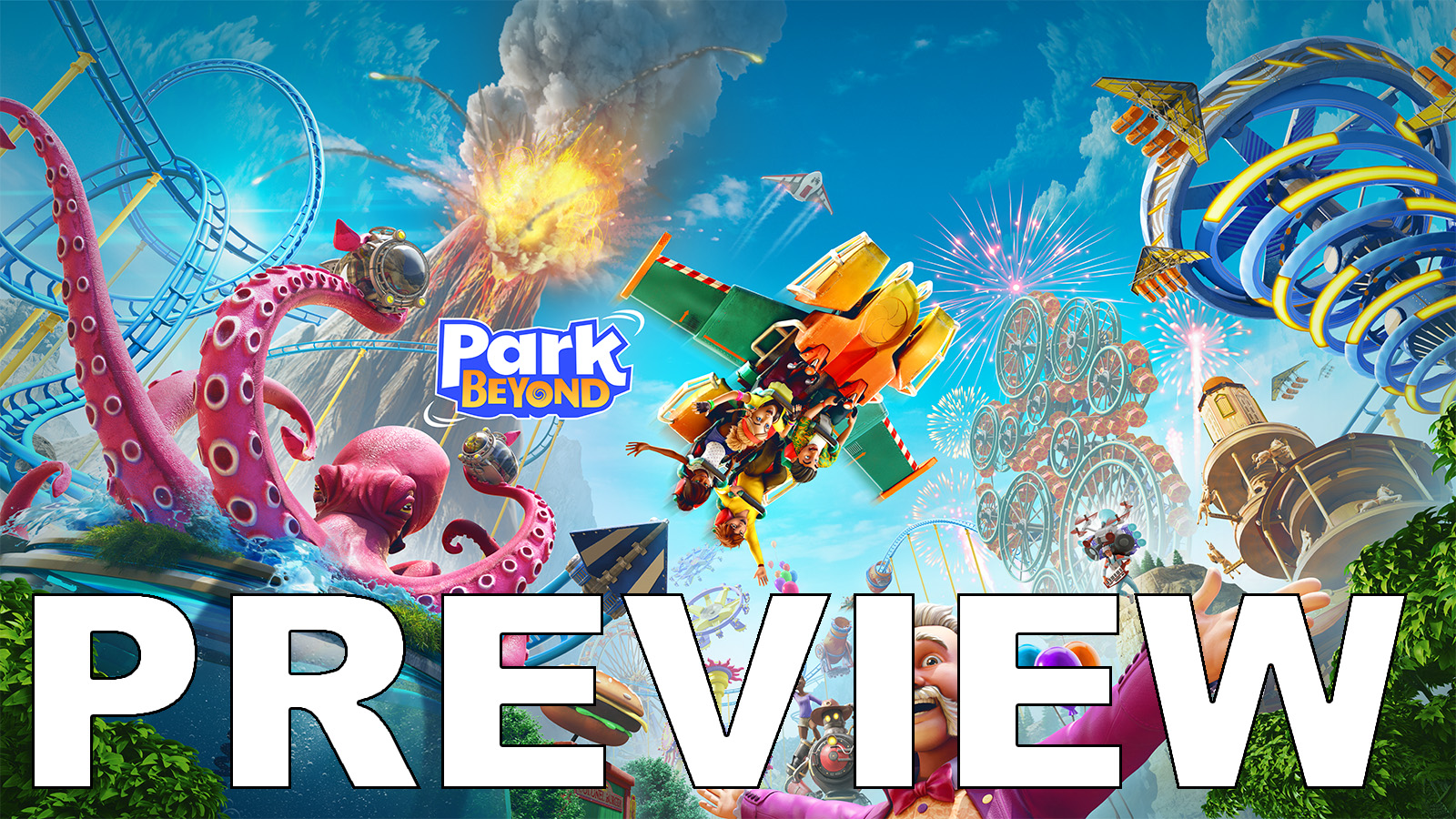Park Beyond Preview: A Rollercoaster Of Entertainment
Theme parks are a place of wonder, entertainment, and creativity, but Bandai Namco and Limbic Entertainment’s upcoming management sim Park Beyond aims to take all of that to the next level with limitless creativity, wackiness, and plenty of customisation. If my time playing the game ahead of its public Beta next month was anything to go by, it succeeds.
During my time with Park Beyond, I had access to the first three major campaign missions, as well as the highly customisable sandbox mode, and I learnt two things; I’m not good at designing theme parks, and Park Beyond is crazy and doesn’t hold back. For example, the game begins with you waking in the bedroom of the player-controlled character and immediately being tasked with constructing a rollercoaster from the fire exit of their bedroom into the city.
This tutorial level quickly covered the basics of constructing rollercoasters; you place ordinary tracks by dragging them from orange points, with the game automatically adjusting the track’s height to your needs a majority of the time. However, you’re free to adjust the height to your liking, as well as the roll, pitch, and yaw of each track with a few simple keyboard inputs and mouse movements, although I did find pitching the roll of the track was a little cumbersome due to the precise mouse movements required.
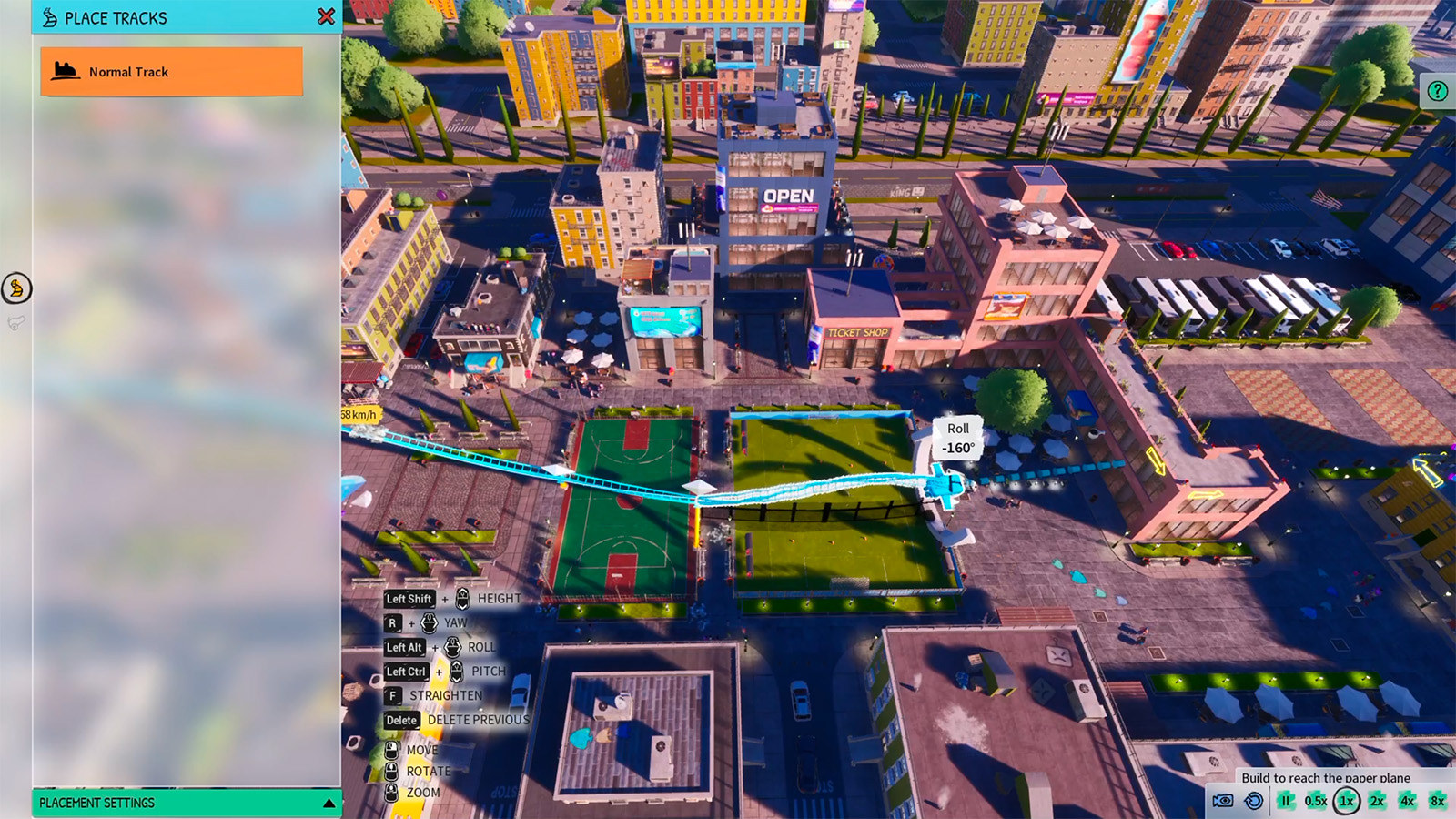
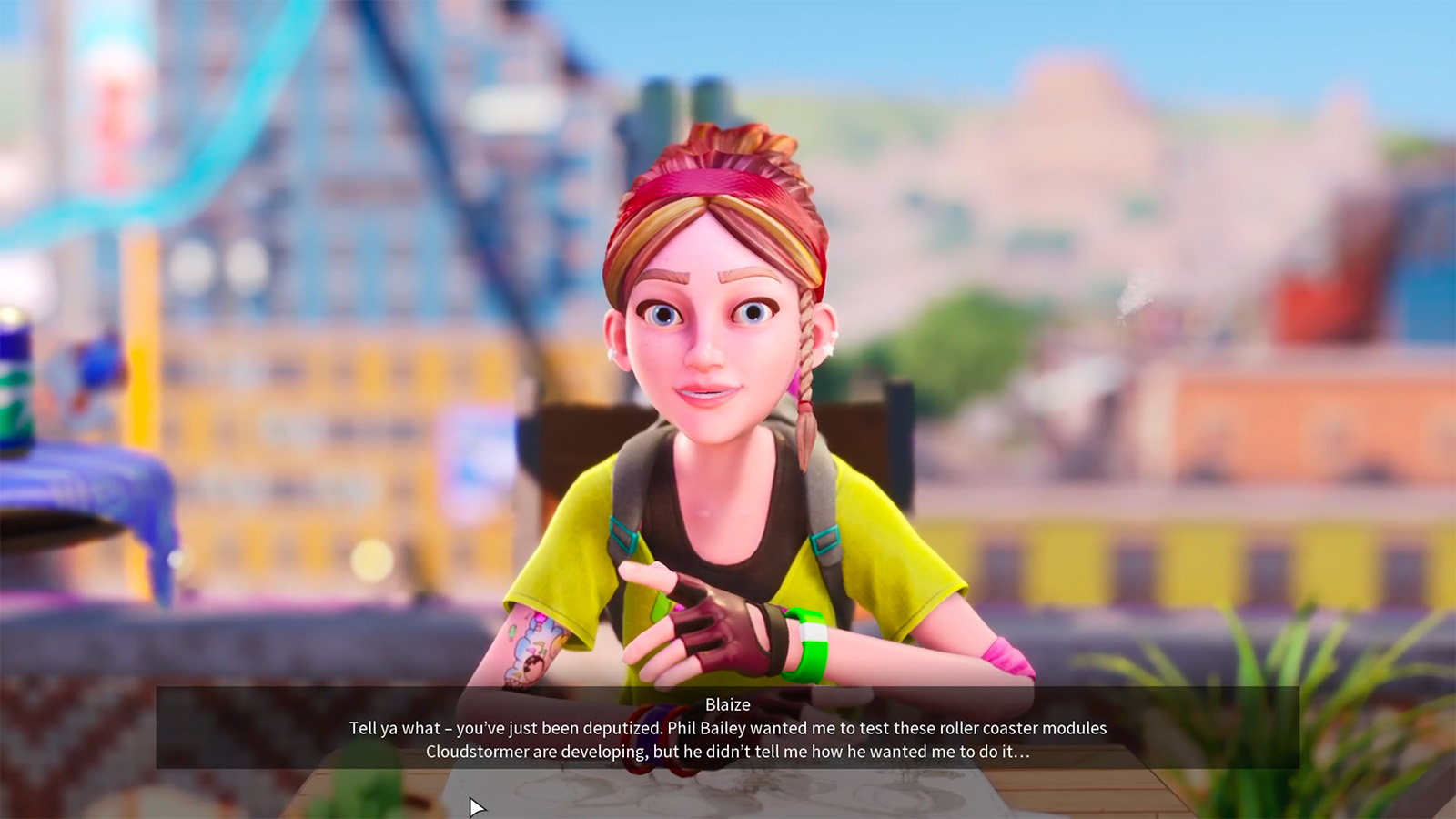
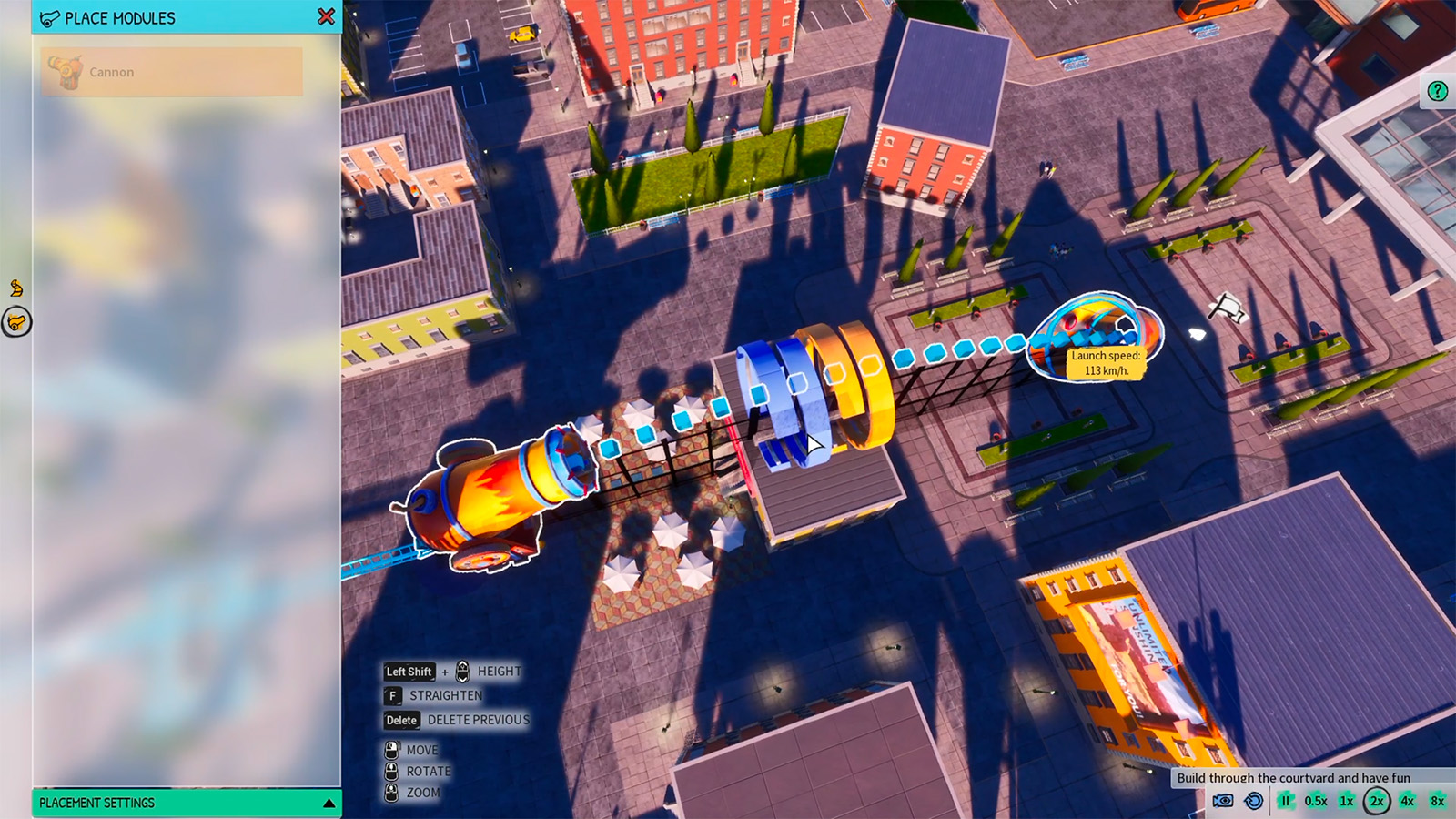

You’re also given a choice to lay straight and curved tracks, and after constructing a disorganised rollercoaster that I’m sure would break people’s necks in real life through the heart of the city, over and around buildings and public parks, I moved onto modules with launchers, which, as suggested, allow you to launch coasters over gaps. I then combined everything I had learnt to finish my construction through the city and into the theme park beyond, where I was quickly hired by struggling theme park company Cloudstormer to help them create weird and fantastic parks.
Now, the above makes the act of building rollercoasters sound simple, but there’s a lot more to take in. Before finishing construction of a rollercoaster, you’re required to carry out safety tests to ensure no accidents occur on the coaster, and that riders actually reach the finish. This appears more difficult than it looks, as creating a climb that’s too steep will send riders rolling back on themselves, requiring you to implement chain lifts to boost coasters to great heights. Thankfully, implementing chain lifts is as easy as clicking on the module and swapping out the tracks from normal to chain lift. You’re also given the choice to add prefabs to your coasters, including loops and tight turns, to make unique rides.
You can also select targets known as Hooks to appeal to different visitors – adults, families, or teens – to make the rides more attractive. These can require you to reach a certain distance, apply certain modules to the coaster, travel a certain speed or distance, apply loops, and so much more. Two can be applied to basic coasters, but upgraded coasters allow for a third, and these hooks provide you with a slight challenge when developing rollercoasters, but it‘s important to use hooks that appeal to whatever audience you’ve targeted for the park to maximise profits and success.
Managing Theme Parks Is A Complicated Business
After the tutorial, I was ushered into the second campaign mission, where I was tasked with fixing an old amusement park and learnt the basics of theme park management. First up, I was required to connect broken-down pathways by selecting from a wide selection of templates, and then extending those already laid out by clicking and dragging them to create the shapes I wanted. The mission then took me over the management of rides, which have three statuses; Closed, Showcases that act as demonstrations but remain closed, and Open, which earns money but has upkeep costs.
To function, rides must have separate entrances and exits that connect to main park paths, and entrances serve as queue spaces for customers. This means you need to strategise where you plop down rides to ensure there’s enough space for the ride, its entrances and exits, additional pathways, and leave enough room for extra facilities and future additions; toilets, benches, shops, food and drink stands, staff rooms, and more. Like rollercoasters, you also need to carry out safety checks on rides to ensure no accidents can happen.
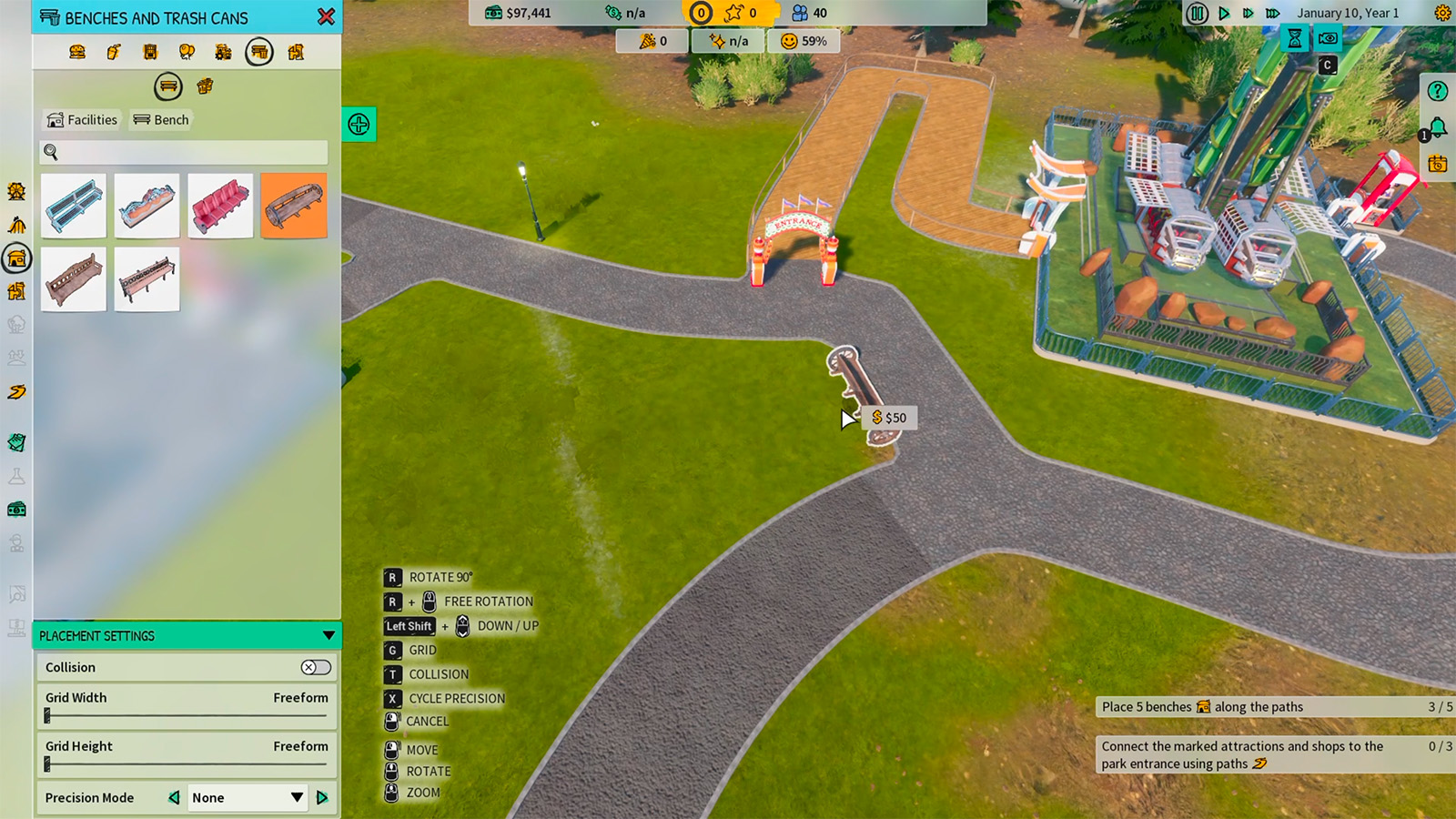
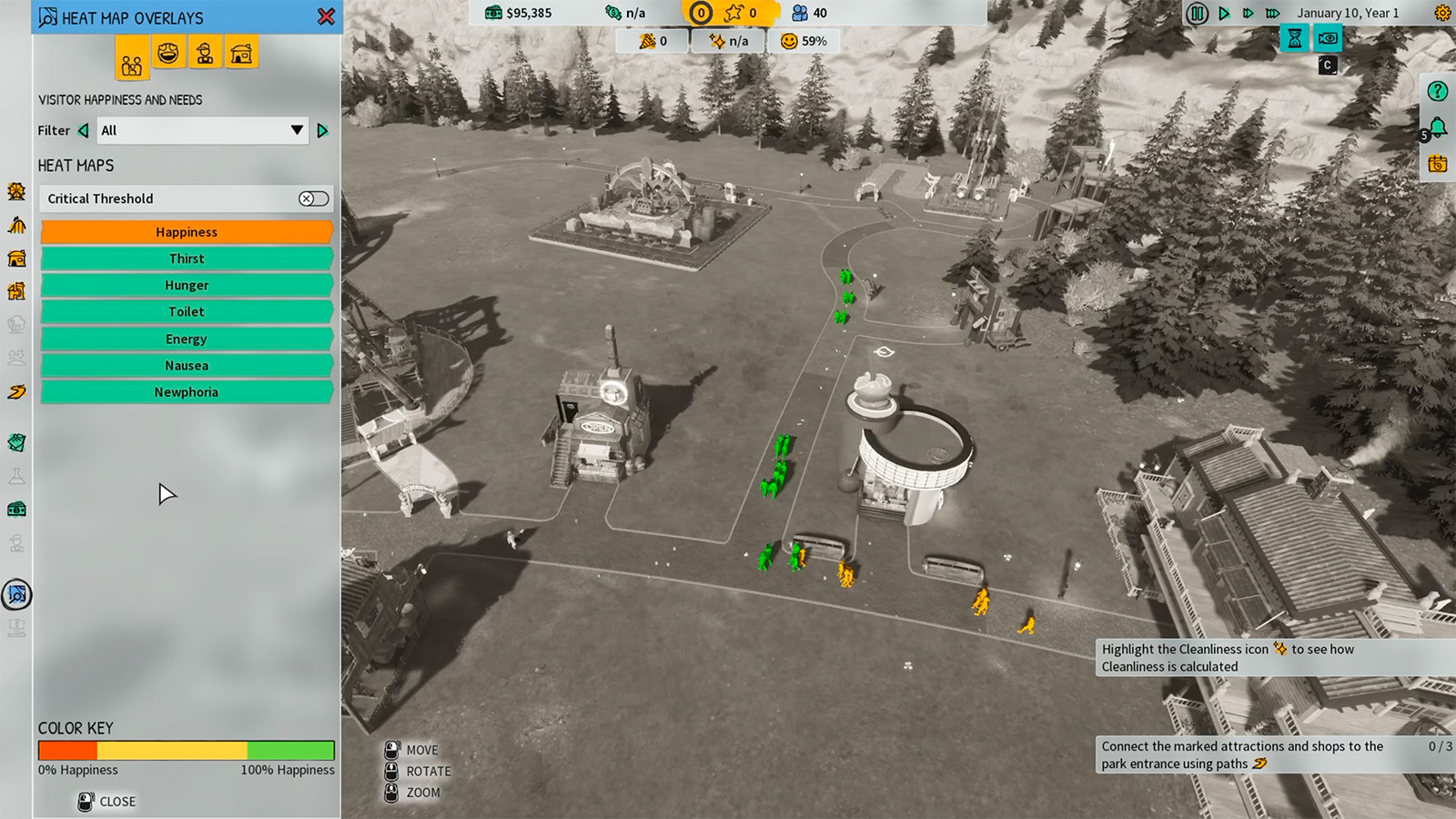
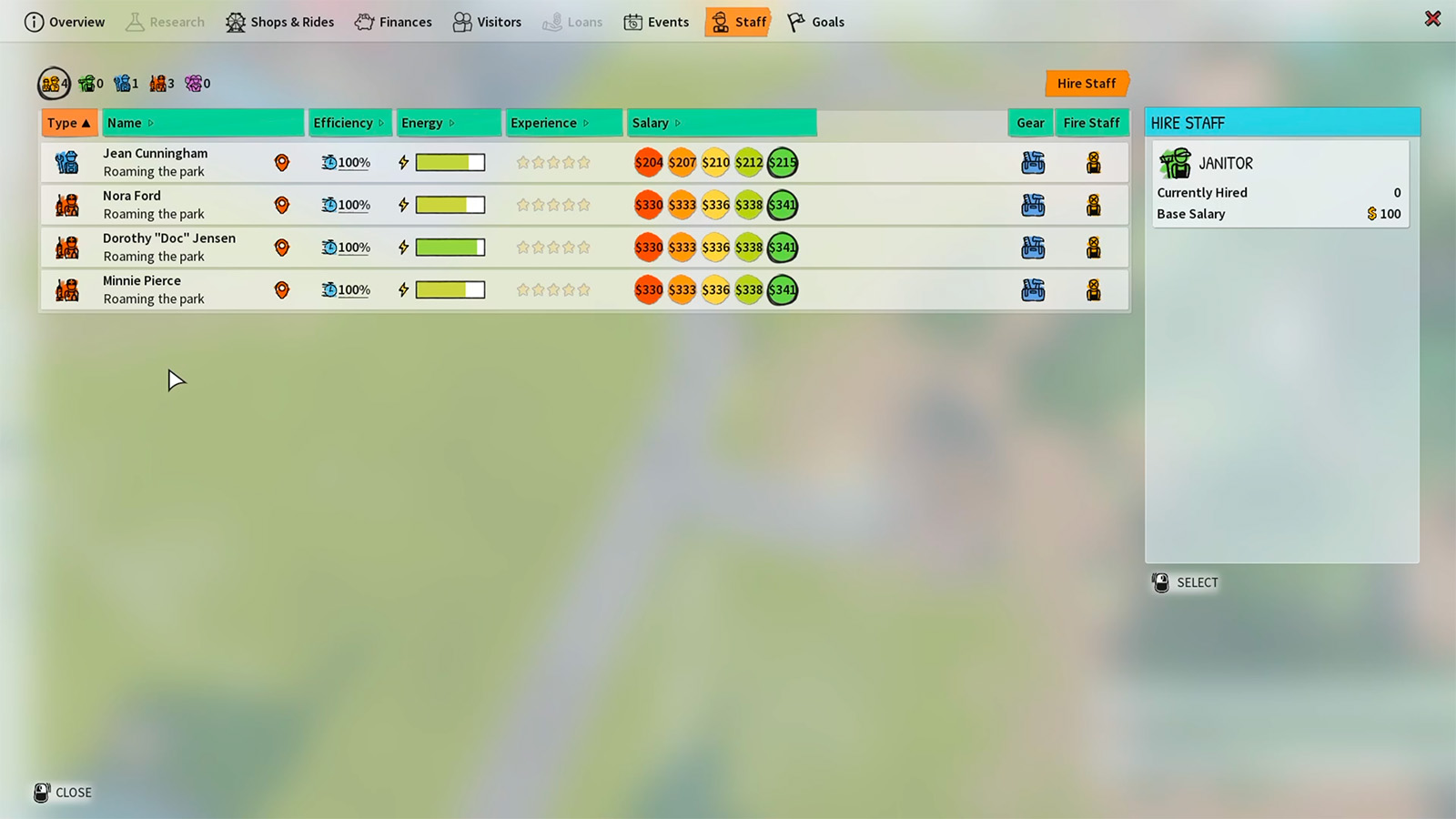
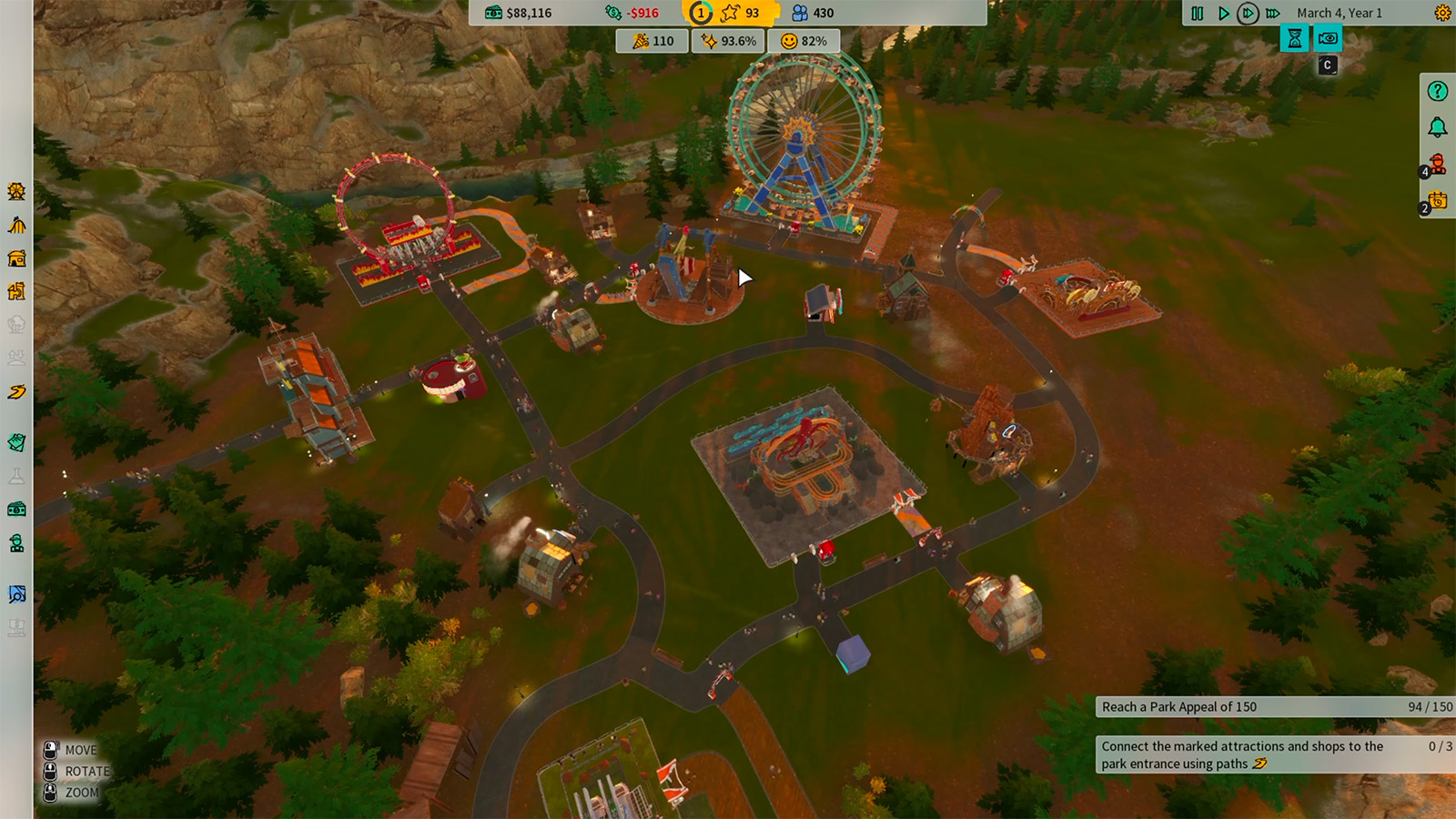
Due to poor planning and decision-making, I quickly found myself running out of room on the map after placing too many rides and made the mistake of making entrances too small for prospective customers, which saw angry visitors leave the park as they were unable to line up for their rides. This also came back to bite me when I realised I had to add toilets and staff rooms and benches and (lots of) bins.
While managing the rides, I also needed to juggle employing staff – janitors, mechanics, entertainers, and medics – and had to work to keep visitors’ needs fulfilled. Thankfully, Park Beyond makes that easy with its heat maps, allowing you to locate upset customers and check what’s irritated them, which can range from a lack of attractive rides, an unkempt park, a lack of facilities, and issues with food and drink, amongst others. To further help you, Park Beyond allows you to click on a ride, shop or facility and filter what customers think of it, including complaints that will give you an idea of what to fix, whether that’s too high pricing, too short queue spaces, and plenty more.
It’s not just visitors that need to be managed, however, as, like with most management simulators, you’ll need to keep an eye on your employees. Thankfully, this was relatively easy (This will likely change depending on the difficulty selected), since employees really only needed time to rest in their staff room, which you can plop down in the park like other facilities. However, employees in Park Beyond are more independent than in other management games, as you can’t just drag and drop them to certain locations. Instead, you have to filter what duties you want employees to take on or avoid, while also dictating their salary.
I messed up fairly early in the second campaign, where I failed to hire enough janitors for the park, causing a rubbish apocalypse. I didn’t have enough janitors to clean overfilling bins nor enough bins scattered around the park for visitors, leading customers to drop their rubbish on the ground throughout the park and causing a buildup of stink. This became so bad that visitors began to leave the park in a fit and my cleanliness rating tanked, and it took several in-game days, dozens of additional bins, and several more janitors to turn things around. The lesson is to not take janitors and bins for granted.

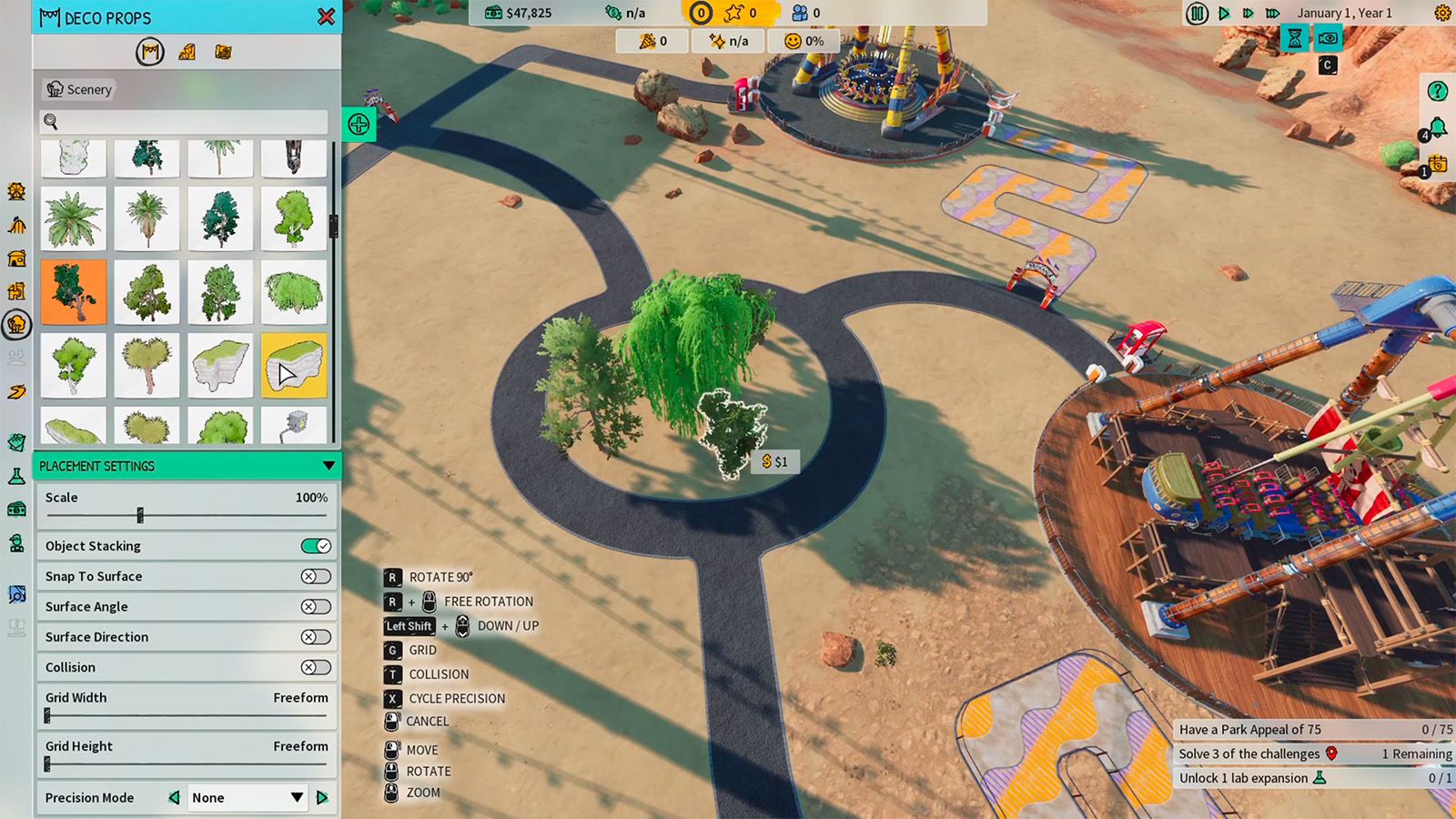
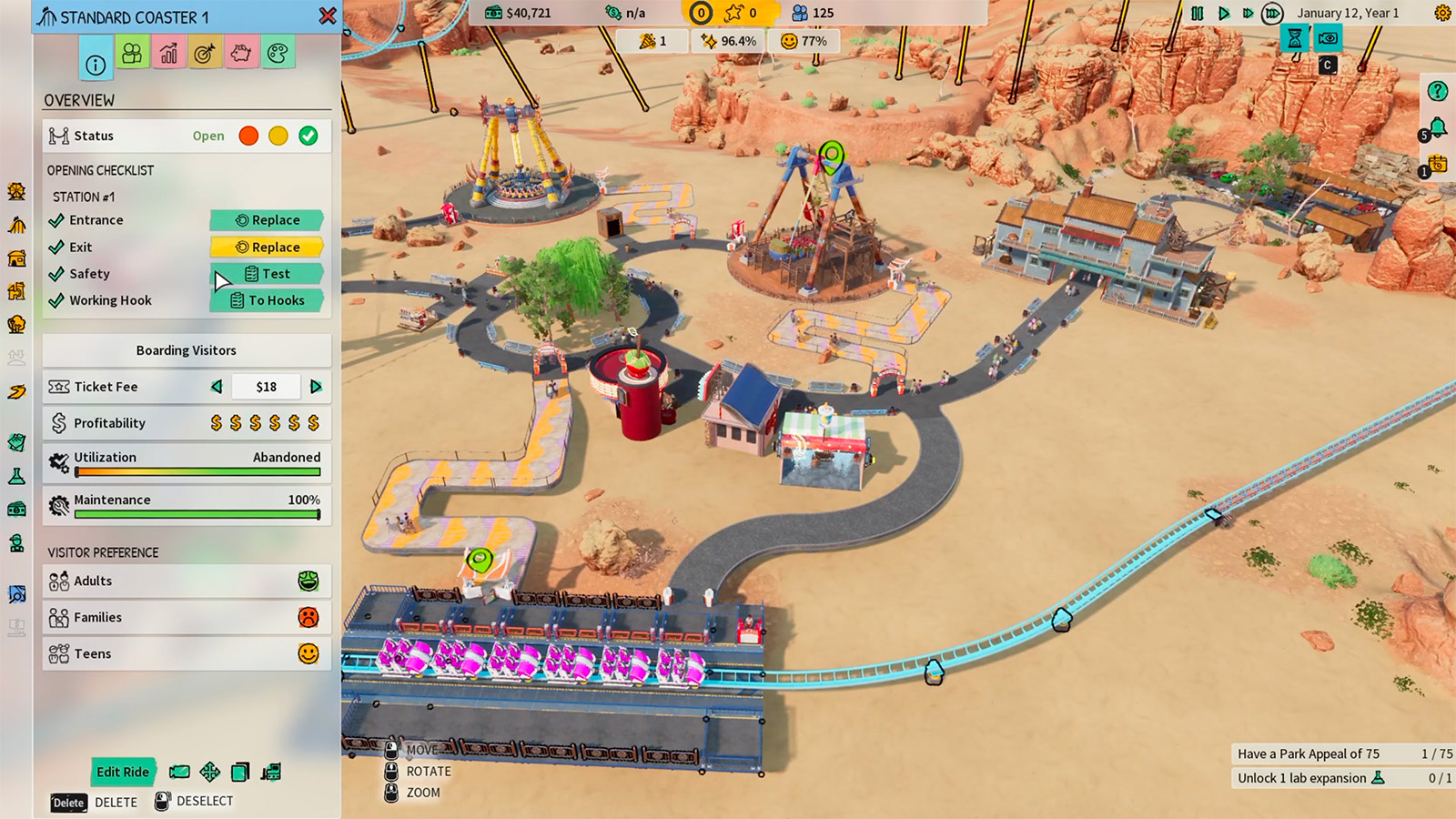
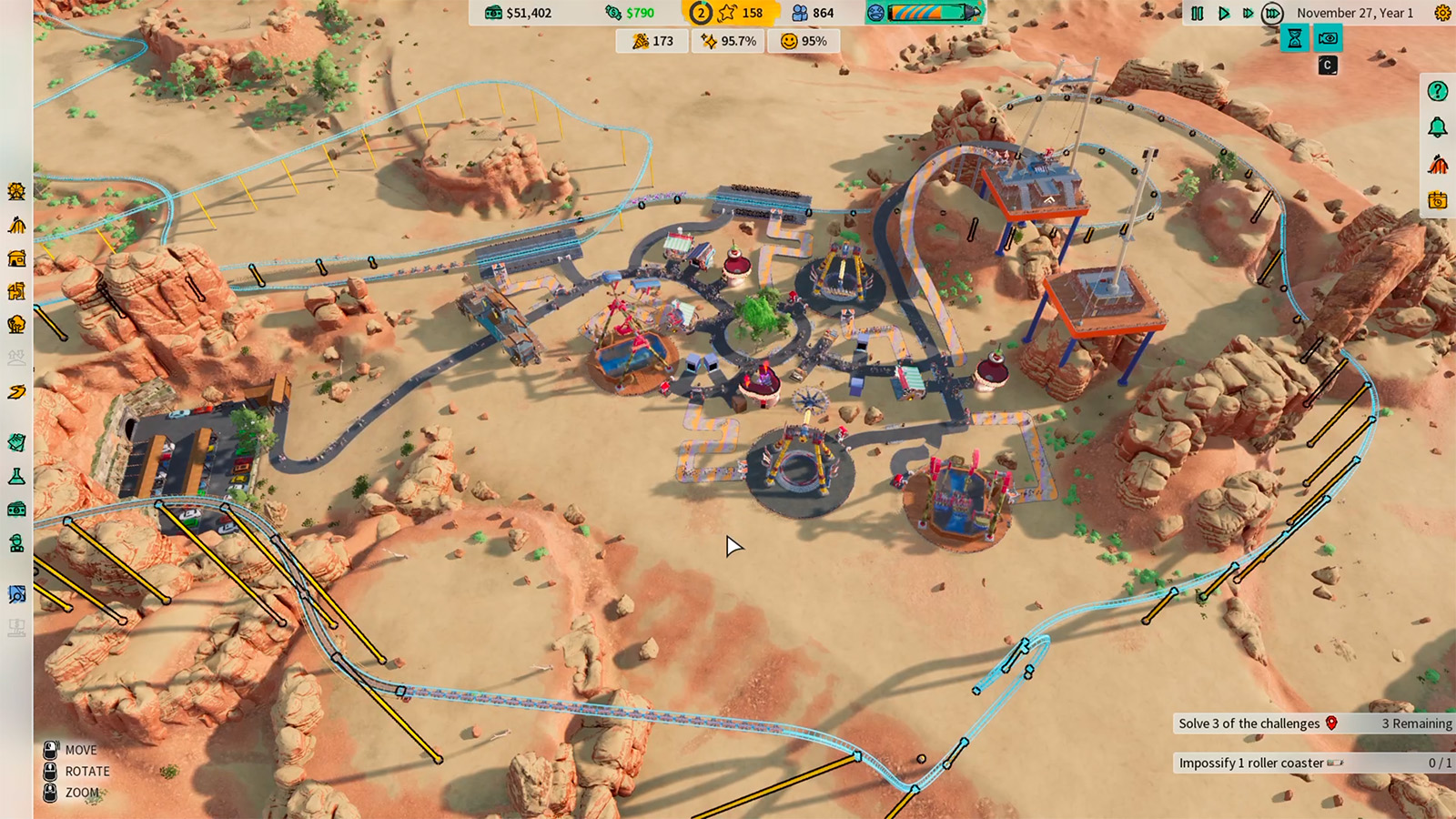
Speaking of finances, like most other management sim games, Park Beyond naturally requires you to keep an eye on your losses and profits and ensure rides and facilities are making you enough to avoid the park’s closure – I, unfortunately, was so enamoured with creating a fun park that I forgot to see what would happen if my park failed. Rides and shops will bring you money, but you’re free to adjust pricing to your liking and then monitor your visitors’ thoughts so you’re not outpricing them.
You’re also free to add charges to toilets, tack on an entry fee to the park, and select what products are available in food, beverage, and souvenir shops. At certain times, you’ll be notified of timed fads, where visitors are more likely to purchase a certain food, drink or souvenir, and you’ll likely want to take advantage of these fads and jack up the price a little to make some more money. However, I did find that the notifications, particularly for fads, weren’t as clearly notified as I would have liked, which meant I occasionally missed them.
The cleanliness rating of your park combined with the fun generated from visitors’ experience within the park generates Park Appeal, which works to help you level your park up. Higher Appeal increases your visitor capacity and unlocks lab expansions, which focus on several factors and provide you with additional decor, themes, modules, rides of varying types, and plenty more.
Appeasing The Board Of Directors
During the first three campaign missions, I was introduced to a cast of colourful characters, the friendly but clashing park veteran Phil and CEO Izzy, as well as engineer Sofia, and numerous others. I also had to participate in board meetings with the group, discussing all available targeting options for each park in the campaign missions, and these decisions allow you to unlock certain themes and rides while playing. While interesting, these meetings with the characters were some of my least favourite parts of the preview as I found myself wanting to go back to building my parks.
The same board also provide you with goals throughout the game, which reward you with Amazement that is used for upgrading elements of your theme park, but more on that later. The goals aren’t always available, and during my time with the game I was only given a few to select from, and they can range from unlocking expansions, making enough profit off certain facilities or rides, and hitting objectives with rollercoasters. You can only work towards one goal at a time, so, like most other decisions made in Park Beyond, it’s important to select something that you can realistically complete.
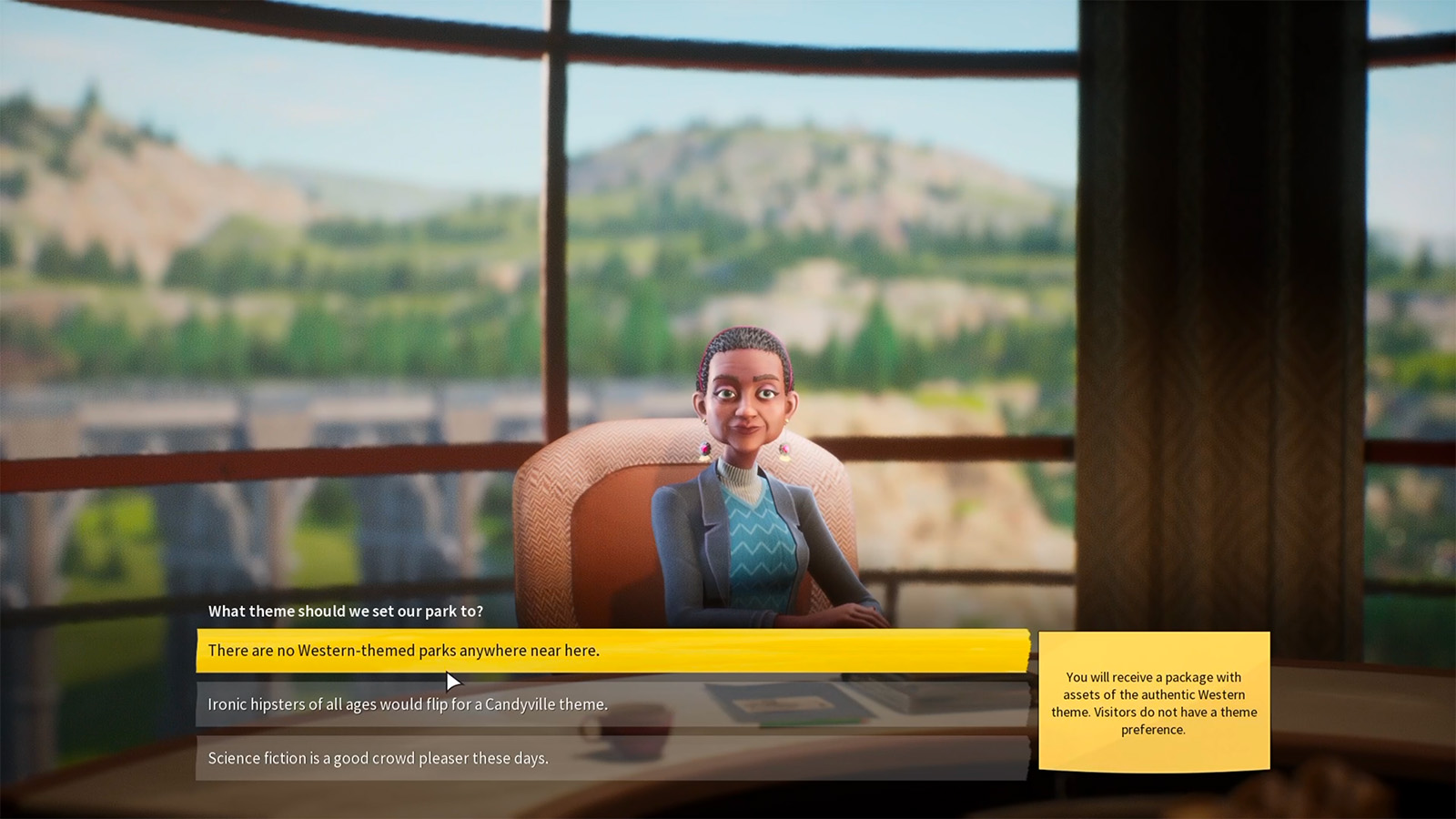
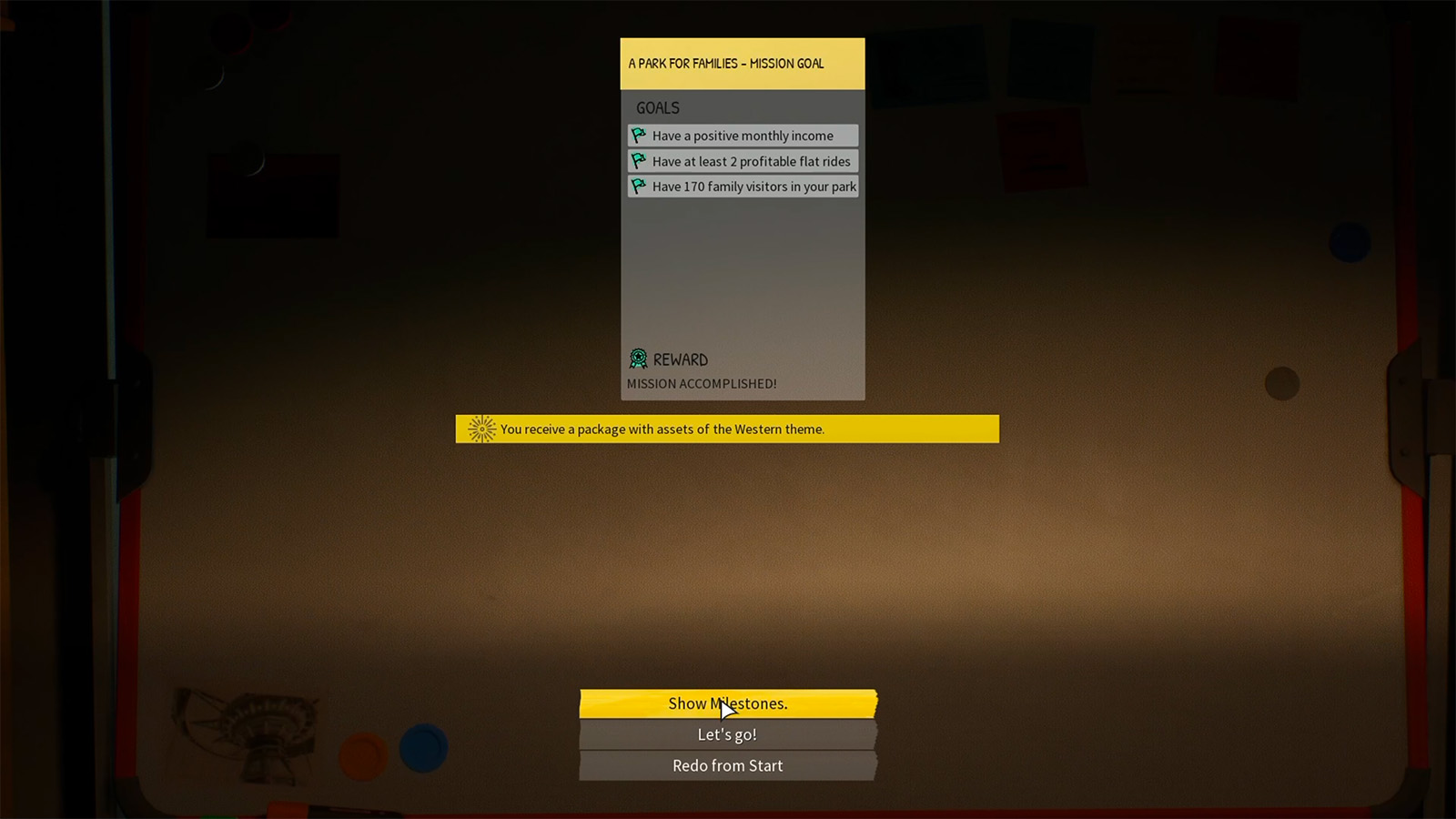
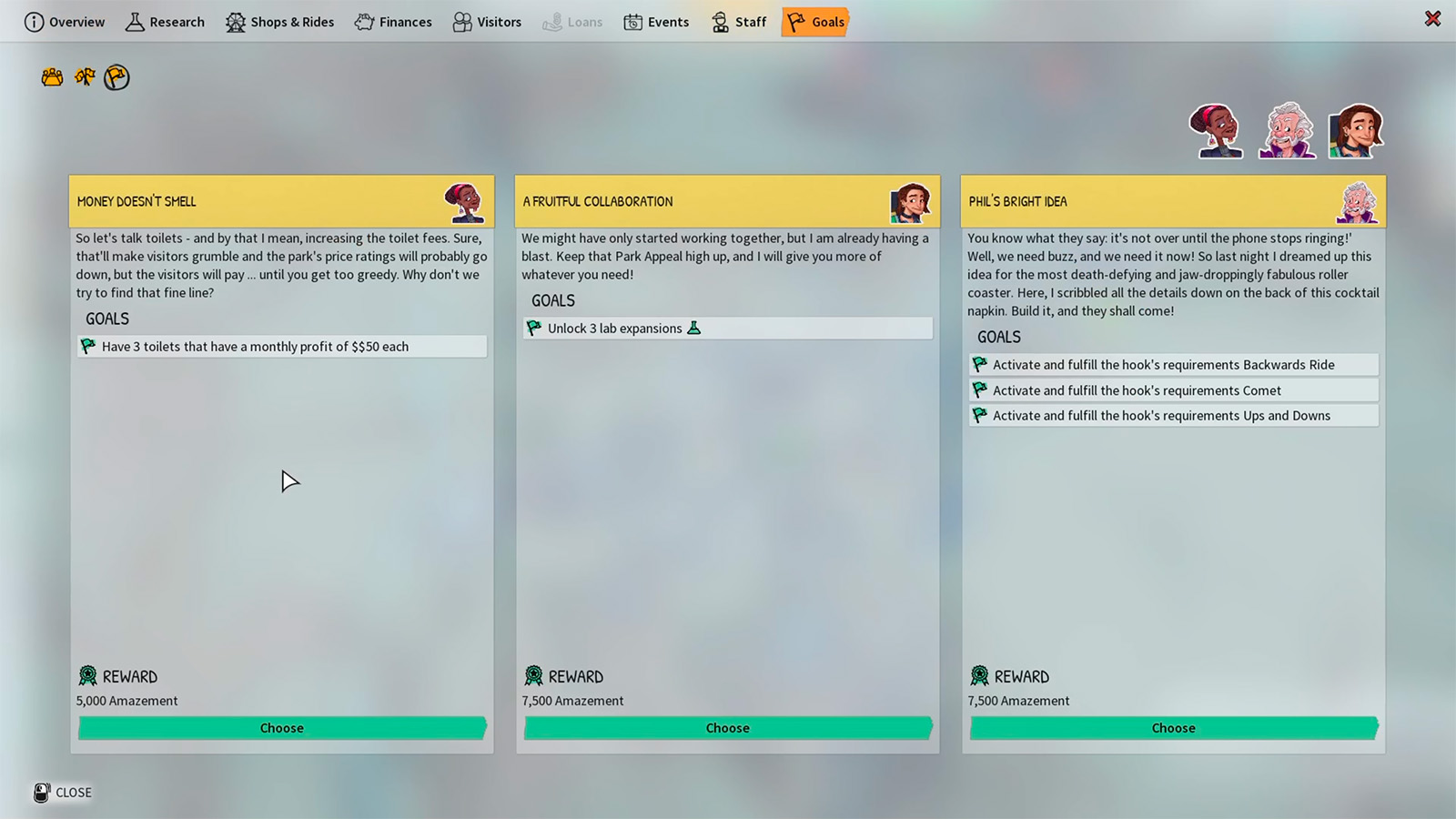

The frequent goals offered an increase in challenge and provided something smaller to work towards. These optional goals can usually be applied to existing rides, but you may find yourself having to construct a new coaster to hit the goals or modify an existing coaster if you don’t have room in the park, but you’ll also have to analyse whether hitting these goals is worth the extra Amazement, particularly if the objectives may clash with hooks you’ve selected for your park and targeted audience.
There’s a lot to think about when operating a park, but all of this works in tangent to growing your park as much as possible and keeping the money coming.
Impossification And Unlimited Creativity
A unique gameplay mechanic to Park Beyond and what sets the game apart from previous theme park management simulators is impossification, a feature that allows you to upgrade rides, shops, facilities, and employees. Each impossification is different; flat rides evolve, shops earn attractors that make them more appealing to visitors, and employees receive new gadgets to improve their efficiency.
Impossification can be used after generating enough Amazement from rides by visitors. All flat rides generate a select amount of Amazement, and rollercoasters generate Amazement based on the hooks selected for them, which is why it’s so important to try and select rollercoaster hooks that apply to your target audience.
Once you’ve generated enough Amazement, you simply have to hit the impossification button (A crayon at the top of the screen that’s steadily filled with colour), click on the employee, shop or ride that you want to impossify, and then click and wiggle your mouse over your selection like you’re colouring in. You’re then rewarded with an explosion of colour, a boosted ride or employee, and a changed appearance for whatever you upgraded, resulting in an ever-changing theme park.

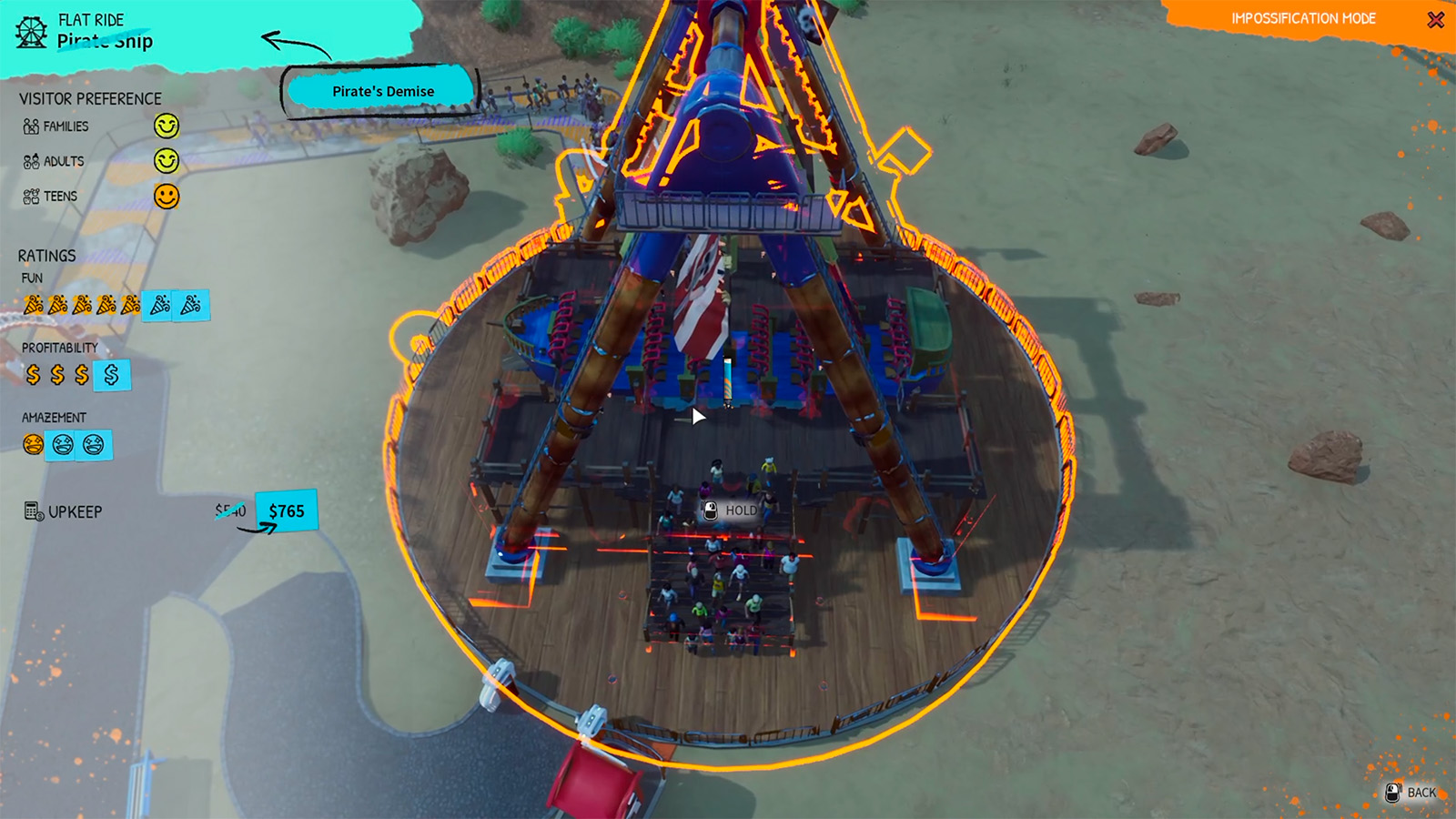
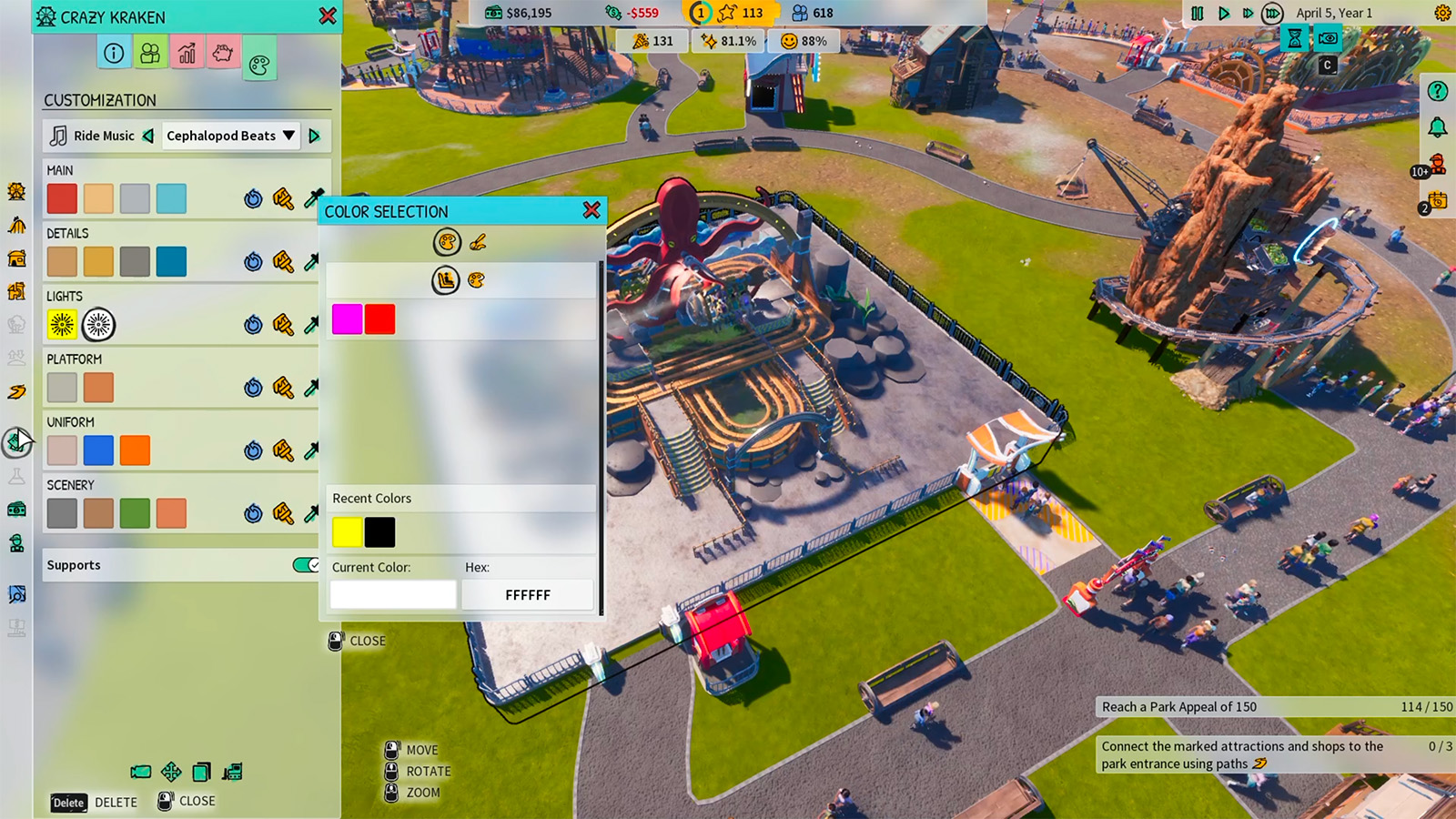

It’s not just the impossification that can lead to a unique park, as the game offers unlimited creativity. From a number of different coloured pathways to the freedom of changing the colours, names, music, and prices of rides – the latter directly influences what visitors think of the park and its attractiveness.
Meanwhile, there are several themes that you can employ to use in your park that are applied to rides, facilities, and more, allowing you to build specially-designed parks akin to Westworld or apply everything to create a mishmash of a theme park.
Park Beyond also comes with modular building, allowing you to create your own set pieces for the park and decorate it how you want. Due to time restraints on my part, I wasn’t able to spend time constructing anything, but the options I checked coupled with the limitless customisation abilities of Park Beyond look to provide you with plenty of options to develop and create your own decor and rollercoaster journey, and it’ll be exciting to see what players come up with down the line.
I enjoyed my time with Park Beyond, and although I had some grievances with the game – the controls were at times a little hard to use when constructing rollercoasters and I experienced a few crashes – I’m hoping many of these issues can be ironed out in time before the game’s release in June.
Ultimately, Park Beyond looks to be a rollercoaster of entertainment, and one with numerous more highs than lows. The preview was fun, offered unlimited creativity, and featured a few wacky campaign missions to keep me busy. There’s plenty to enjoy, as well as plenty for Limbic Entertainment to build upon in the coming years.
Park Beyond releases on June 16th for PC via Steam, PS5, and Xbox Series consoles.

